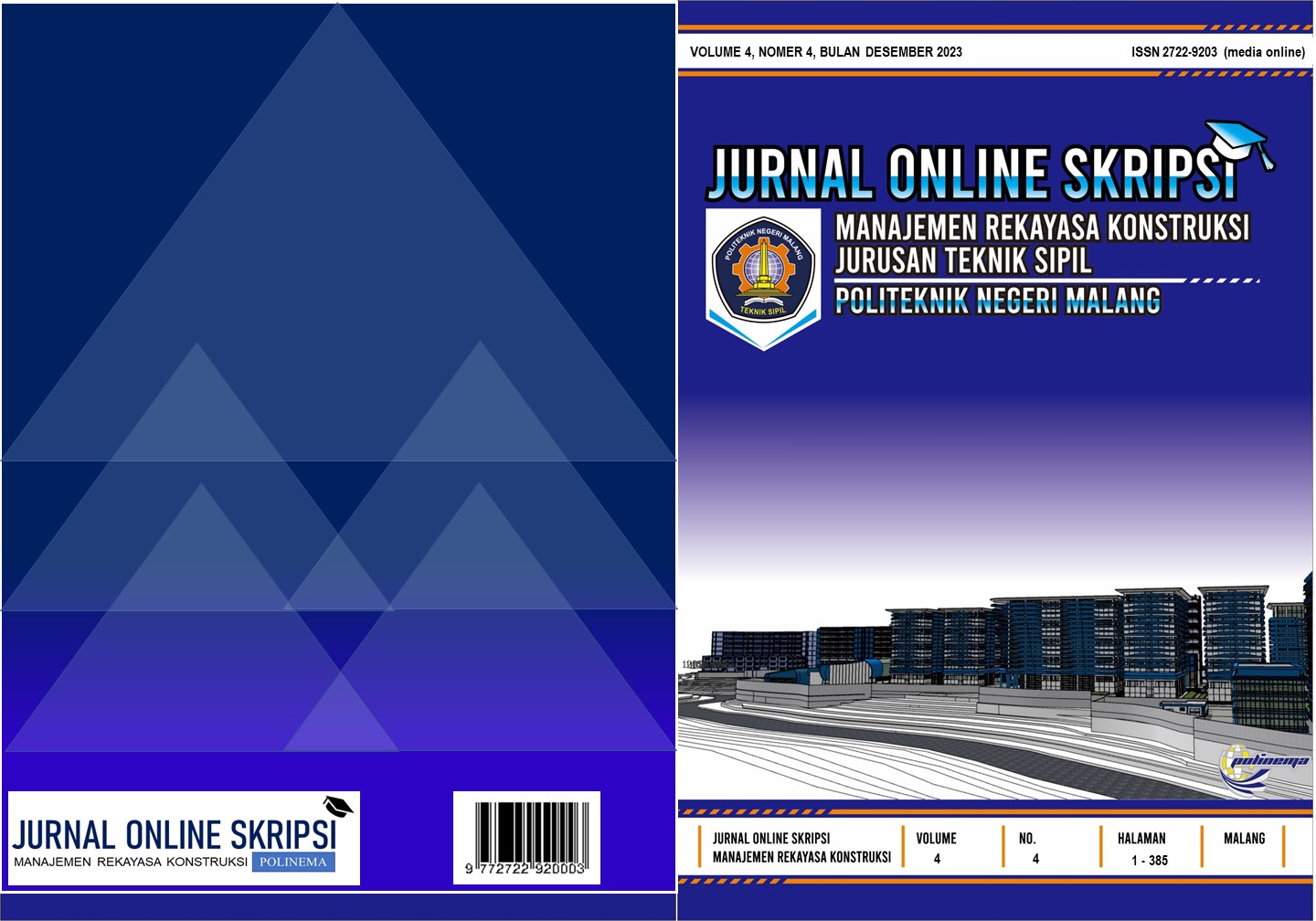Main Article Content
Abstract
Urbanization and an increase in the population in Bor County put pressure on the environment as more land is exploited and existing urban areas are further developed and densified which already put high pressure to handle the risks of climate change. Urban drainages system should be designed to create more resilience to floods for sustainable areas, where flood management is one of the challenges that need to be tackled. This research formulation aims to answer some of the key factors regarding designing a sustainable urban drainage system as a means of reducing the risks of flooding, improving water quality, and promoting sustainable development. The type of drainage used is the open channel type and includes the non-level series with parts including the main channel, sub-channel dimensions, and infiltration wells. To be able to achieve a sustainable and resilient urban drainage system, we have to handle the volume of runoff water with rainfall data for 10 years which is important for the flooding implementation process which changes reputably each year. It is crucial to design and implement facilities and systems that are sustainable, and multifunctional for designing SUDS in Bor with hydraulic and hydrology methods. The implementation process needs to use cost estimation approaches that include flood mitigation and co-benefits, in the long-term and short-term simultaneously. From the results, the design of rain is 73.82 mm/day for 2 years return period, and 93.08 mm/day for 5 years return period. The data is then used as the basis for planning the channel dimensions with several channels of the urban drainage system. The results are in the form of a total main dimension height of 5 meters, total width of 3.52 meters, and a length of 76 meters with the security control of soil stability to carry a capacity of 5m3/s. The budget plan for total cost estimation is IDR 15.511.693.828.
Keywords
Article Details
References
- Alves, A. et al. (2020) ‘Exploring trade-offs among the multiple benefits of green-blue-grey infrastructure for urban flood mitigation’, Science of the Total Environment, 703. Available at: https://doi.org/10.1016/j.scitotenv.2019.134980.
- ‘FullBookDrainasePerkotaan’ (no date).
- Gautam, D. and Rodrigues, H. (no date) Architectural and Structural Characteristics of Indigenous Newari Chhen: Study of Seismic Risk and Resilience in the Historic Urban Nucleus of Bhaktapur City, Nepal.
- Giovan, H. et al. (2013) PERENCANAAN SISTEM DRAINASE KAWASAN KAMPUS UNIVERSITAS SAM RATULANGI, Jurnal Sipil Statik.
- Gomes, M., Pires, A. and Ferreira Carneiro, P.R. (2012) ‘Sustainable Drainage Systems: An Integrated Approach, Combining Hydraulic Engineering Design, Urban Land Control and River Revitalisation Aspects’, in Drainage Systems. InTech. Available at: https://doi.org/10.5772/33896.
- Harisuseno, D., Bisri, M. and Haji, T.S. (2020) ‘Inundation controlling practice in urban area: Case study in residential area of Malang, Indonesia’, Journal of Water and Land Development, 46(7–9), pp. 112–120. Available at: https://doi.org/10.24425/jwld.2020.134203.
- LITERATURE REVIEW 2 (no date).
- Zhou, Q. (2014) ‘A review of sustainable urban drainage systems considering the climate change and urbanization impacts’, Water (Switzerland). MDPI AG, pp. 976–992. Available at: https://doi.org/10.3390/w6040976.
- National Standard Body. 2014 SNI -2017. Engineering Planning Procedure for Rainwater Infiltration Wells for Yard Land. National Standard Body. Jarkarta
- Hydrologic Engineering Center.2010. HEC-RAS River Analysis System. User’s Manual. Davis: U.S.A Army Corps of Engineers.
- Harifa, Ayisya Cindy. 2020.HEC-RAS Module. Malang: State Polytechnic of Malang
References
Alves, A. et al. (2020) ‘Exploring trade-offs among the multiple benefits of green-blue-grey infrastructure for urban flood mitigation’, Science of the Total Environment, 703. Available at: https://doi.org/10.1016/j.scitotenv.2019.134980.
‘FullBookDrainasePerkotaan’ (no date).
Gautam, D. and Rodrigues, H. (no date) Architectural and Structural Characteristics of Indigenous Newari Chhen: Study of Seismic Risk and Resilience in the Historic Urban Nucleus of Bhaktapur City, Nepal.
Giovan, H. et al. (2013) PERENCANAAN SISTEM DRAINASE KAWASAN KAMPUS UNIVERSITAS SAM RATULANGI, Jurnal Sipil Statik.
Gomes, M., Pires, A. and Ferreira Carneiro, P.R. (2012) ‘Sustainable Drainage Systems: An Integrated Approach, Combining Hydraulic Engineering Design, Urban Land Control and River Revitalisation Aspects’, in Drainage Systems. InTech. Available at: https://doi.org/10.5772/33896.
Harisuseno, D., Bisri, M. and Haji, T.S. (2020) ‘Inundation controlling practice in urban area: Case study in residential area of Malang, Indonesia’, Journal of Water and Land Development, 46(7–9), pp. 112–120. Available at: https://doi.org/10.24425/jwld.2020.134203.
LITERATURE REVIEW 2 (no date).
Zhou, Q. (2014) ‘A review of sustainable urban drainage systems considering the climate change and urbanization impacts’, Water (Switzerland). MDPI AG, pp. 976–992. Available at: https://doi.org/10.3390/w6040976.
National Standard Body. 2014 SNI -2017. Engineering Planning Procedure for Rainwater Infiltration Wells for Yard Land. National Standard Body. Jarkarta
Hydrologic Engineering Center.2010. HEC-RAS River Analysis System. User’s Manual. Davis: U.S.A Army Corps of Engineers.
Harifa, Ayisya Cindy. 2020.HEC-RAS Module. Malang: State Polytechnic of Malang
